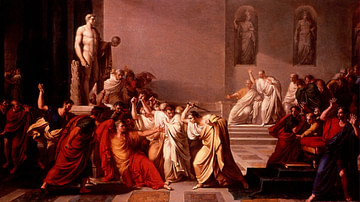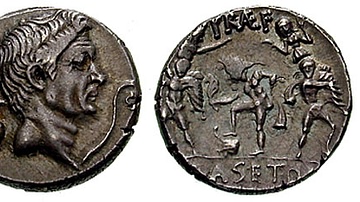Review

| Rating: | |
|---|---|
| Title: | The Fall of Carthage: The Punic Wars 265-146BC (W&N Military) |
| Author: | Goldsworthy, Adrian |
| Audience: | General Public |
| Difficulty: | Medium |
| Publisher: | Phoenix |
| Published: | 2003 |
| Pages: | 416 |
In the final analysis, "The Fall of Carthage" remains a superior, definitive work of military history, as valuable to the academic as it is accessible to the general reader. Adrian Goldsworthy skillfully brings together in one grand, interwoven tapestry the relationships and interrelationships that, without question, laid the foundations for the early Mediterranean world.
“No Roman or Carthaginian could have dreamed in 264 that their states were about to embark on a twenty-four-year struggle which would involve huge casualties, still less that it would be the first of three wars between the two peoples” (65). It is against this backdrop that the historian Adrian Goldsworthy sets his thoughtful, well-documented analysis of the Punic Wars, the multigenerational conflict between Rome and Carthage.
Goldsworthy, who received an ancient history doctorate from Oxford University, well knows the territory. He has lectured on Greek and Roman history and wrote numerous books, including The Roman Army at War, Caesar: The Life of a Colossus, and The Fall of the West: The Death of the Roman Superpower. In The Fall of Carthage, Goldsworthy approaches the Punic Wars in extensive detail. With an eye to period political friction, as tempered by the cultural differences between Carthage and Rome, he suggests how fundamental dissimilarities inexorably impacted the eventual outcomes of the three wars. For the reader along for the ride, it is an agreeable and informative journey.
The struggle between Rome – the victor in all three wars – and Carthage spanned over a century from the first engagement in 265 BCE to the final ruin of Carthage in 146 BCE. It is primarily a military history, as opposed to one that focuses exclusively on cultural, political, social, or religious aspects of the period being covered. Fittingly, in order to further refine the focus, Goldsworthy examines the wars against the backdrop of the military theories, tactics, and characteristics common to the period, positing that the Carthaginian and Roman approaches to warfare – as generated by the military, partisan, and social organizations which produced them – "shaped the conflict and that the differences between them ultimately decided its outcome” (18).
By design, each of the three wars receives a comprehensive summary of events, not only of the battles themselves but also the respective peace agreements brought to each side. More importantly, Goldsworthy does not rely solely on the accounts put forth by ancient writers, such as Polybius, Appian, or Livey, but expands his analyses to present the impact on the entire Mediterranean area. Additionally, for those wanting to examine the wars in a bit more detail, Goldsworthy includes comprehensive notes in support of the text, a detailed Chronology of Events, and appendices that examine the Republican Political System and the Consular Army.
Personally, I found Goldsworthy’s reflective conclusion to be particularly insightful: “The Romans had not fought to destroy Punic culture; nor indeed had the wars ever been a struggle between conflicting ideologies, political systems, religions or cultures, but rather a simple contest for domination between rival states. Rome had waged war to subdue and finally to destroy another city state whose interests conflicted with its own and which was perceived to be a threat. This enemy, Carthage the political entity, source of its population’s identity and their focus of loyalty, was utterly destroyed in 146” (357).
In the final analysis, The Fall of Carthage remains a superior, definitive work of military history, as valuable to the academic as it is accessible to the general reader. While the dozens of individual sketches do indeed provide rich and interesting vignettes of the people and their times – for example: “an Insubrian cavalryman, whom Livy names Ducarius, charged the Roman lines, killed Flaminius’ personal bodyguard and then impaled the consul himself with his spear” (188) – it is their collective impact on the military strategies, both Roman and Carthaginian, that Goldsworthy skillfully brings together in one grand, interwoven tapestry showing the relationships and interrelationships that laid the foundations for the early Mediterranean world.
About the Reviewer
Cite This Work
APA Style
Woods, B. F. (2023, August 30). The Fall of Carthage: The Punic Wars 265-146 BC. World History Encyclopedia. Retrieved from https://www.worldhistory.org/review/379/the-fall-of-carthage-the-punic-wars-265-146-bc/
Chicago Style
Woods, Brett F.. "The Fall of Carthage: The Punic Wars 265-146 BC." World History Encyclopedia. Last modified August 30, 2023. https://www.worldhistory.org/review/379/the-fall-of-carthage-the-punic-wars-265-146-bc/.
MLA Style
Woods, Brett F.. "The Fall of Carthage: The Punic Wars 265-146 BC." World History Encyclopedia. World History Encyclopedia, 30 Aug 2023. Web. 12 Dec 2023.



